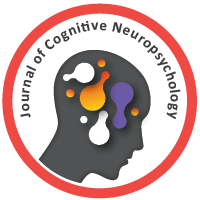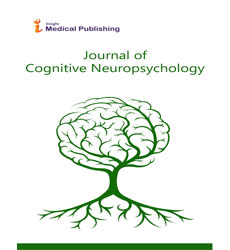Cognitive Neuropsychology of Reading and Dyslexia: BrainâÂÂbehavior Correlates
*Corresponding author:
Friedmann Krause,
Department of Disability and Psychoeducational Studies, University of Arizona, Tucson, AZ 85701, USA;
E-mail: Krause.f@arizon.edu
Received date: January 02, 2025, Manuscript No. ipcn-25-20476; Editor assigned date: January 04, 2025, PreQC No. ipcn-25-20476 (PQ); Reviewed date: January 16, 2025, QC No. ipcn-25-20476; Revised date: January 23, 2025, Manuscript No. ipcn-25-20476 (R); Published date: January 30, 2025, DOI: 10.36648/IPCN.9.1.002
Citation: Krause F (2025) Cognitive Neuropsychology of Reading and Dyslexia: Brain–behavior Correlates. J Cogntv Neuropsych Vol: 9 No: 1.2
Introduction
Reading is a uniquely human skill that requires the integration of visual, phonological, and semantic processes. From a cognitive neuropsychology perspective, reading involves the coordinated activity of multiple brain systems that translate written symbols into meaningful language. Disruptions in these processes can result in reading impairments, the most common of which is developmental dyslexia. Dyslexia affects a significant proportion of children worldwide and often persists into adulthood, making it a central topic of research in cognitive neuropsychology. The study of dyslexia provides important insights into the brainâ??behavior relationship underlying reading. By examining how specific cognitive deficits map onto brain structures, researchers have been able to identify the neural mechanisms that support reading fluency and comprehension. Evidence from lesion studies, functional neuroimaging, and neuropsychological assessments has revealed that dyslexia is not a simple disorder of vision or intelligence but a complex condition involving deficits in phonological processing, orthographic recognition, and working memory. Understanding these brainâ??behavior correlates is crucial for both theoretical models of reading and the development of effective interventions [1].
Description
Cognitive neuropsychology distinguishes between dual-route models of reading: the phonological route, which converts letters into sounds, and the lexical route, which allows for direct word recognition. Dyslexia manifests in disruptions of these routes, leading to different subtypes such as phonological dyslexia, surface dyslexia, and deep dyslexia. For instance, individuals with phonological dyslexia struggle to decode unfamiliar or non-words, while surface dyslexia involves difficulty recognizing irregular words. These behavioral patterns highlight how specific cognitive processes correspond to distinct neural substrates [2].
Neuroimaging and lesion studies have identified a network of brain regions critical for reading. The left temporo-parietal cortex supports phonological processing, the occipito-temporal region (often referred to as the â??visual word form areaâ?) is crucial for rapid word recognition, and the inferior frontal gyrus contributes to articulatory planning and semantic integration. In dyslexic readers, underactivation of these regions is frequently observed, accompanied by compensatory activity in right hemisphere networks. This atypical neural organization reflects how the brain adapts to reading challenges, often at the cost of fluency and accuracy. At the behavioral level, dyslexia is characterized by slow and effortful reading, frequent errors in word recognition, and poor spelling. These difficulties are strongly linked to deficits in phonological awarenessâ??the ability to manipulate the sound structure of language. Additionally, impairments in working memory and rapid automatized naming further compromise reading performance. Cognitive neuropsychological research has demonstrated that these deficits are not uniform across individuals, reinforcing the idea that dyslexia is a heterogeneous condition with multiple brainâ??behavior profiles [3].
Understanding the brainâ??behavior correlates of dyslexia has direct implications for diagnosis and intervention. Neuropsychological assessments can help identify specific cognitive weaknesses, guiding targeted interventions such as phonics-based training or orthographic reinforcement. Moreover, advances in neuroimaging are beginning to inform educational strategies by identifying neural predictors of reading outcomes. Interventions that promote left-hemisphere activation patterns have shown promise in improving reading skills, while technological tools such as computer-assisted reading programs are increasingly being tailored to individual cognitive profiles. Another direction is the application of artificial intelligence and machine learning to personalize interventions, allowing adaptive reading programs that respond to a learnerâ??s unique cognitive profile. Additionally, neuroplasticity research combined with non-invasive brain stimulation (e.g., transcranial magnetic stimulation or transcranial direct current stimulation) may offer novel therapeutic approaches to strengthen underactive reading circuits. Cross-linguistic studies are also crucial, as dyslexia manifests differently in alphabetic versus logographic writing systems, and understanding these differences will broaden the universality of cognitive models. Ultimately, integrating neuropsychological, technological, and educational perspectives will pave the way for early detection, individualized instruction, and improved long-term outcomes for individuals with dyslexia. [4,5].
Conclusion
The cognitive neuropsychology of reading and dyslexia underscores the intricate relationship between brain mechanisms and behavior. Dyslexia exemplifies how disruptions in specific neural pathways manifest as distinct cognitive and behavioral difficulties in reading. Research has revealed that multiple brain systems contribute to the reading process and that dyslexia arises from atypical functioning within this network, particularly in phonological and orthographic processing regions. Beyond advancing theoretical models, these findings hold critical value for clinical practice and education, offering a pathway toward early diagnosis, personalized intervention, and more effective strategies to support individuals with dyslexia. Advances in genomic and epigenetic research may further clarify the heritable components of dyslexia and how they interact with environmental factors such as language exposure and literacy training.
Acknowledgment.
None.
Conflict of Interest
None.
References
- Beneventi H, Tønnessen FE, Ersland L, Hugdahl K (2010). Executive working memory processes in dyslexia: Behavioral and fMRI evidence. Scand J Psychol 51: 192-202.
Google Scholar Cross Ref Indexed at
- Habib M (2000). The neurological basis of developmental dyslexia: an overview and working hypothesis. Brain 123: 2373-2399.
Google Scholar Cross Ref Indexed at
- Valdois S, Bosse ML, Tainturier MJ (2004). The cognitive deficits responsible for developmental dyslexia: Review of evidence for a selective visual attentional disorder. Dyslexia 10(4), 339-363.
Google Scholar Cross Ref Indexed at
- Peyrin C, Lallier M, Demonet JF, Pernet C, Baciu M, et al. (2012). Neural dissociation of phonological and visual attention span disorders in developmental dyslexia: FMRI evidence from two case reports. Brain Lang 120: 381-394.
Google Scholar Cross Ref Indexed at
- Miciak J, Fletcher JM (2020). The critical role of instructional response for identifying dyslexia and other learning disabilities. J Learn Disabil 53: 343-353.
Google Scholar Cross Ref Indexed at

Open Access Journals
- Aquaculture & Veterinary Science
- Chemistry & Chemical Sciences
- Clinical Sciences
- Engineering
- General Science
- Genetics & Molecular Biology
- Health Care & Nursing
- Immunology & Microbiology
- Materials Science
- Mathematics & Physics
- Medical Sciences
- Neurology & Psychiatry
- Oncology & Cancer Science
- Pharmaceutical Sciences
